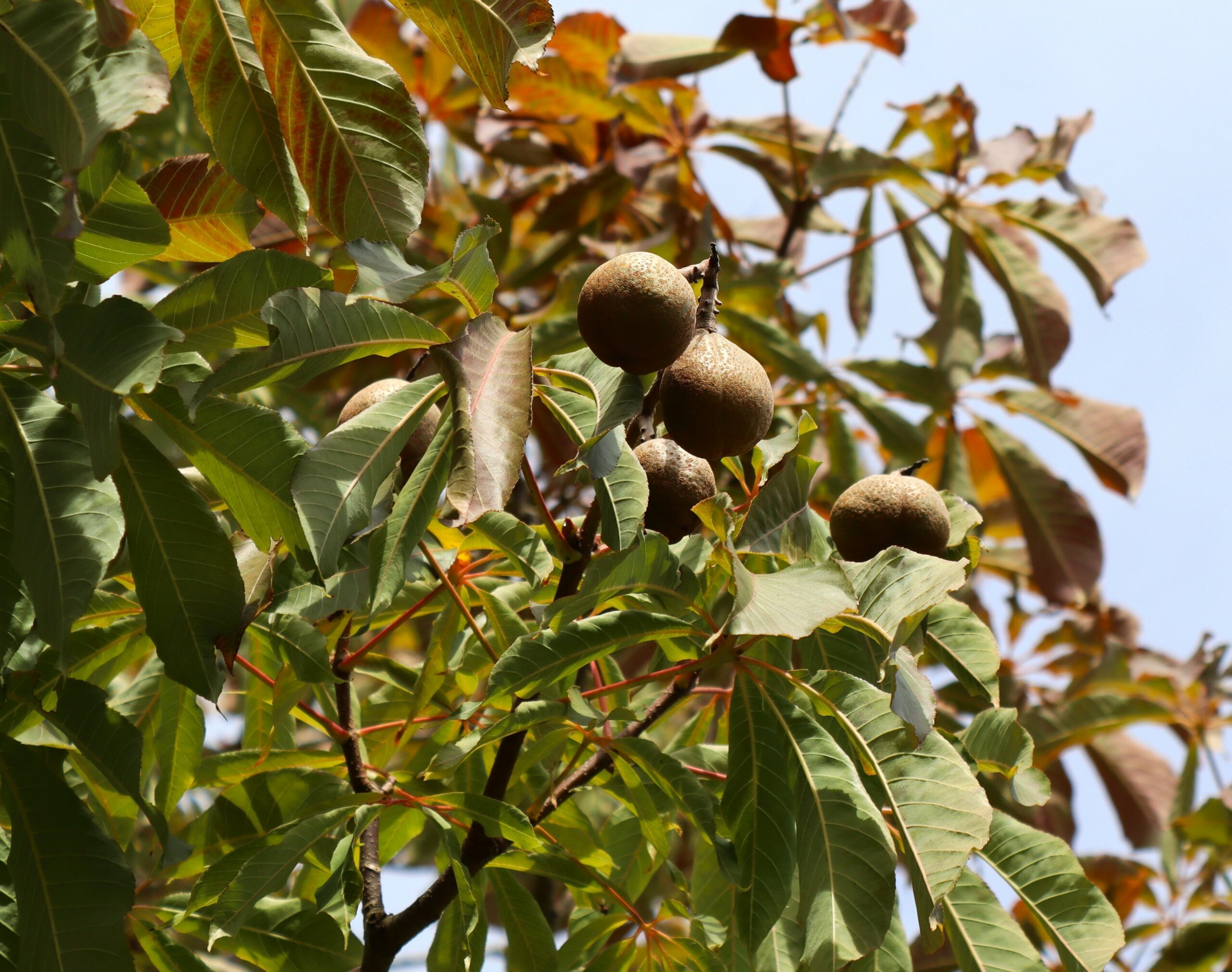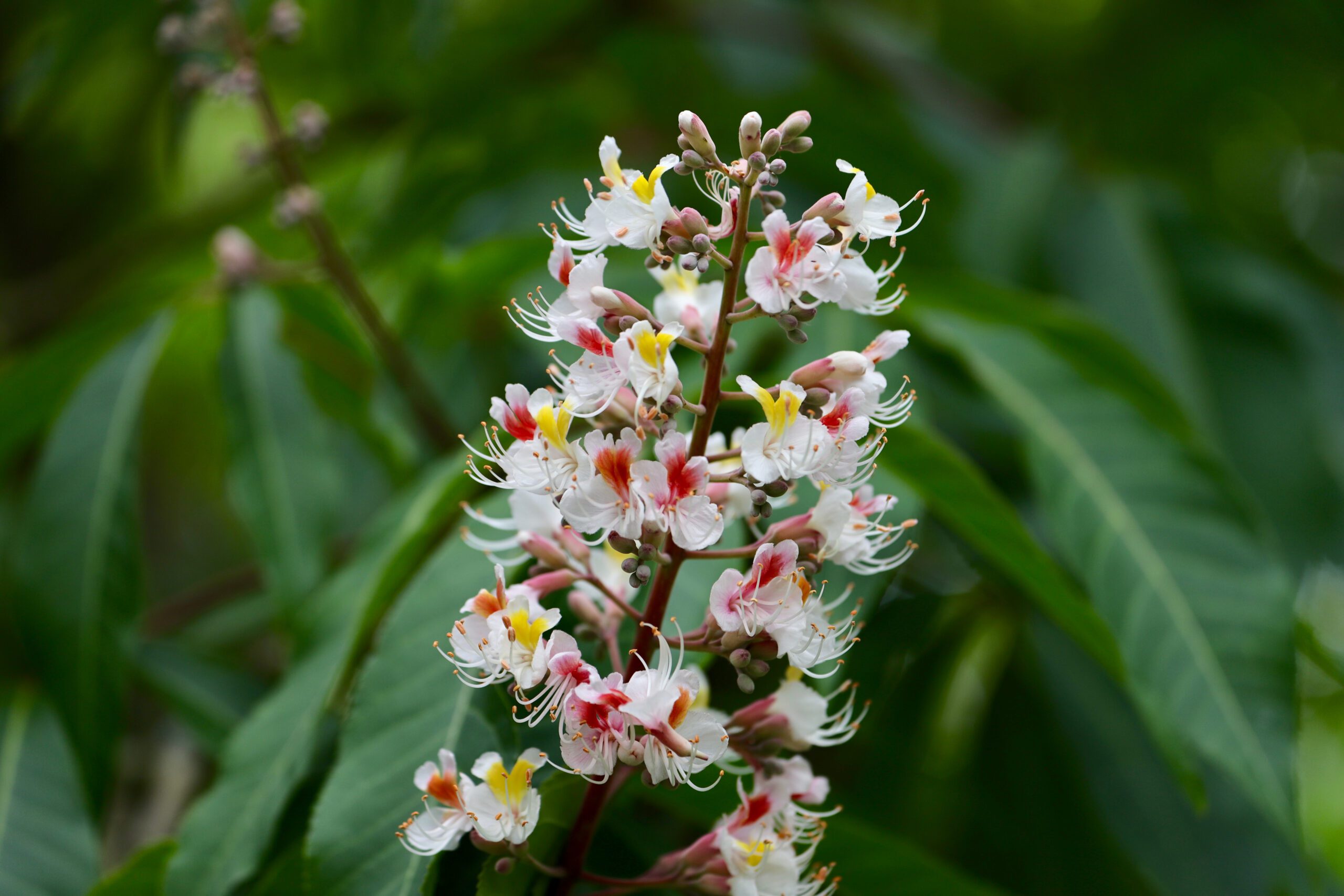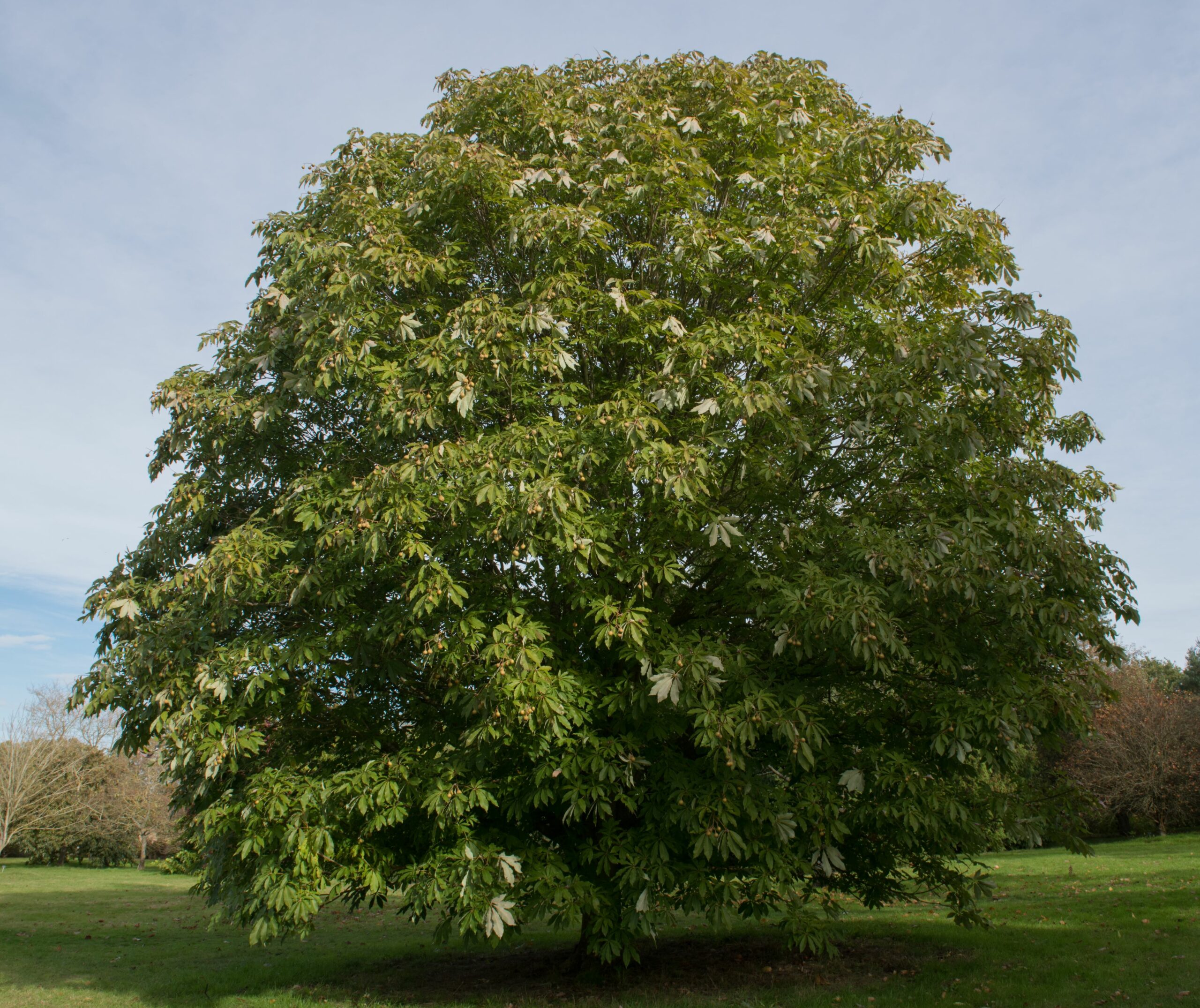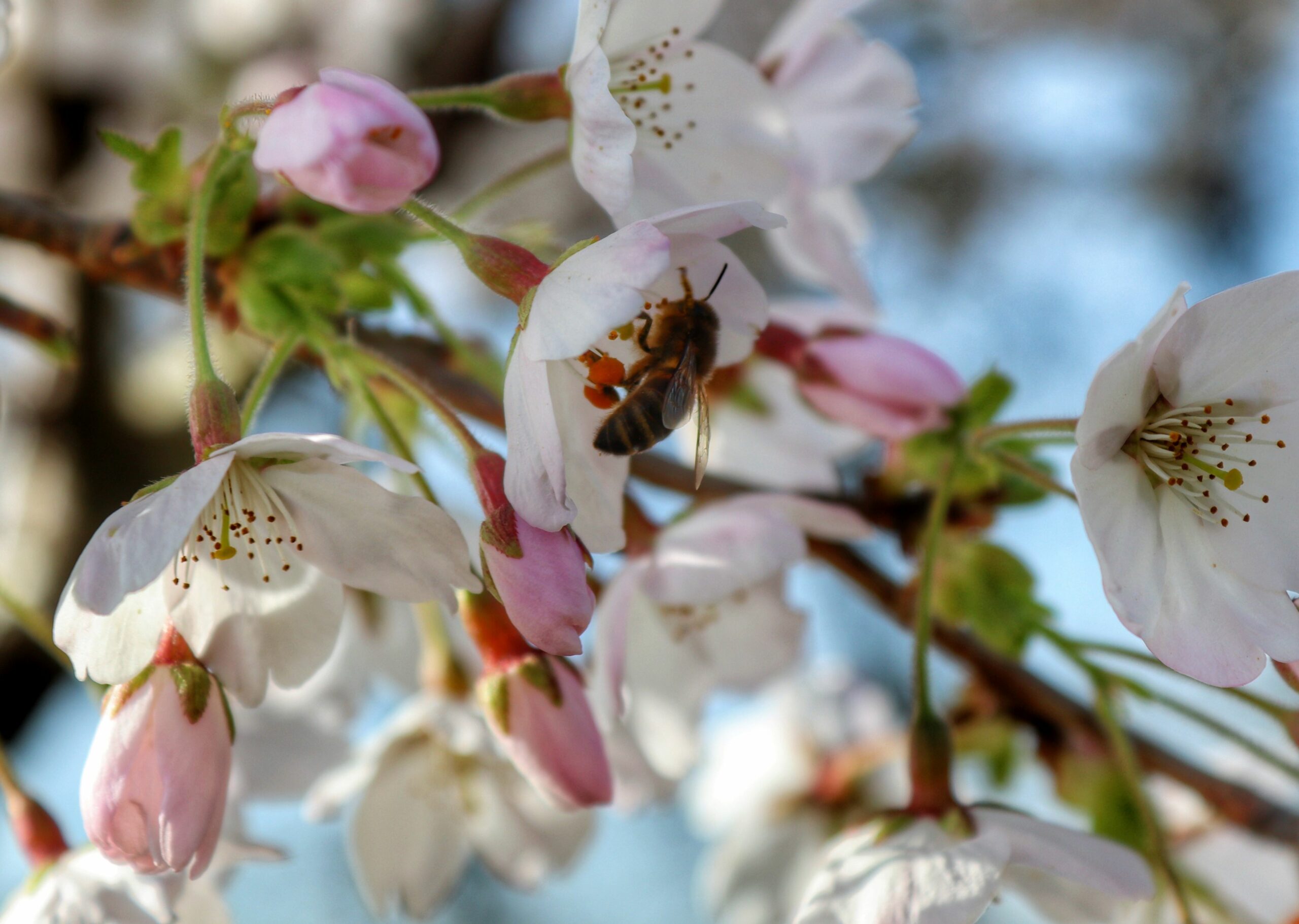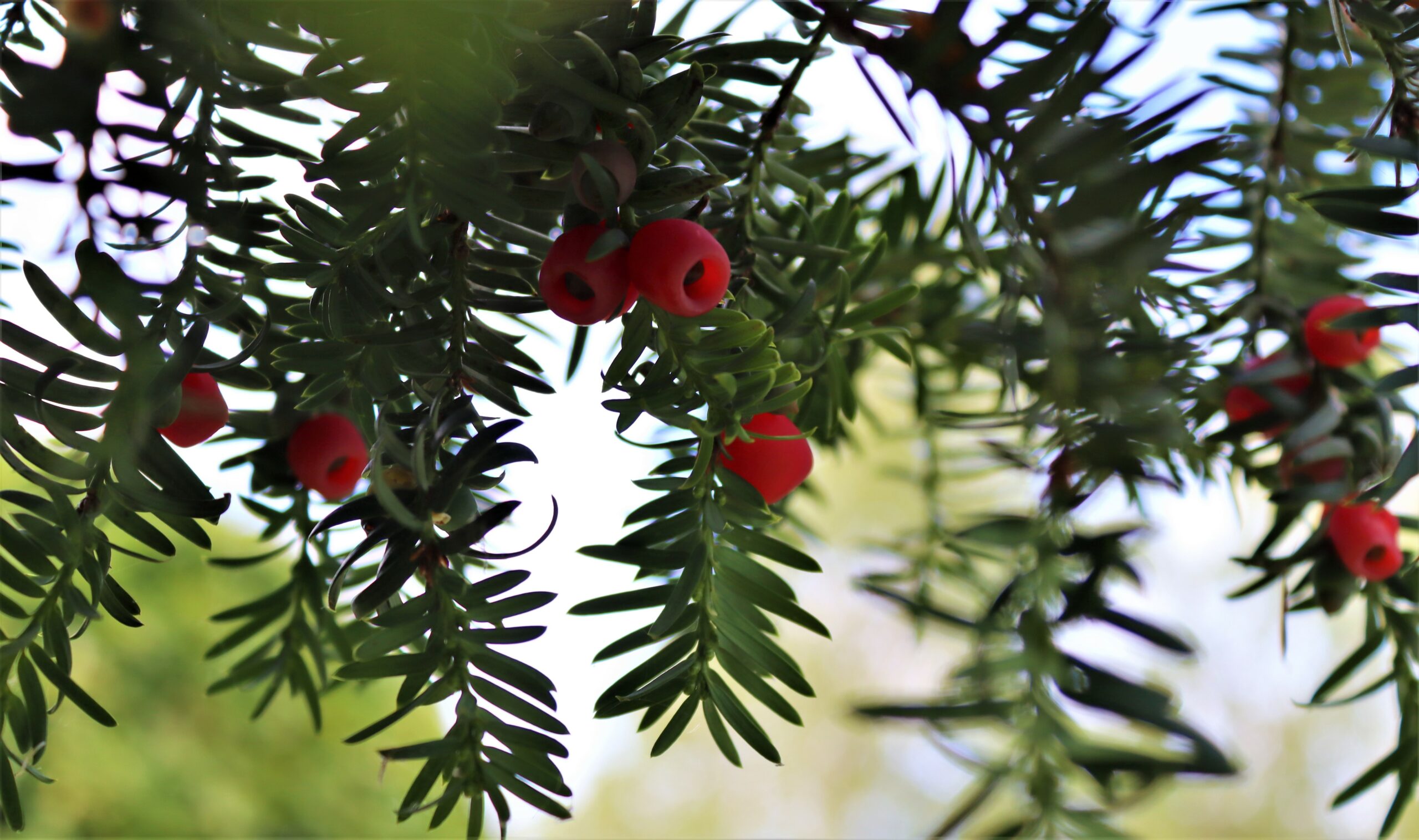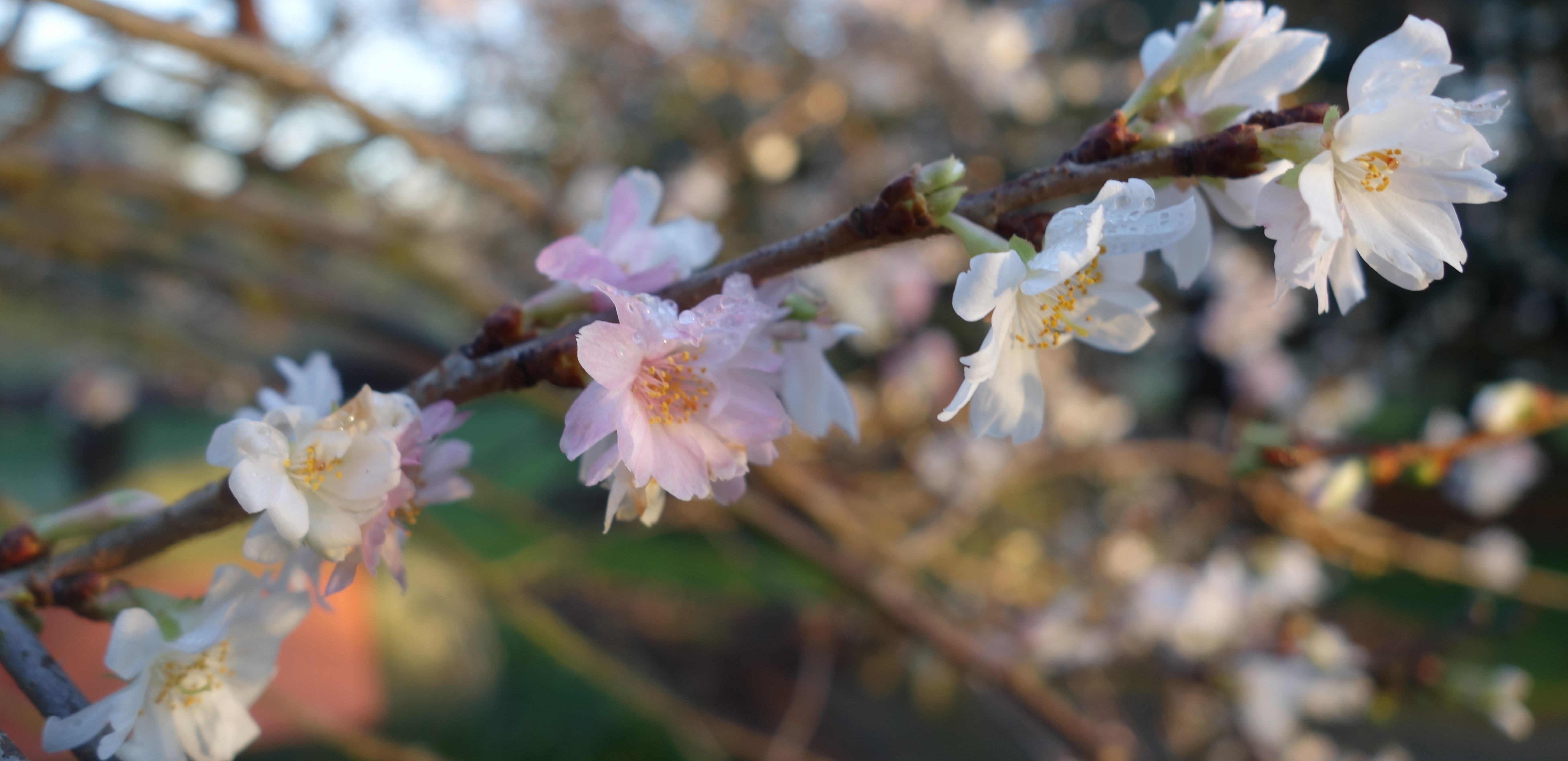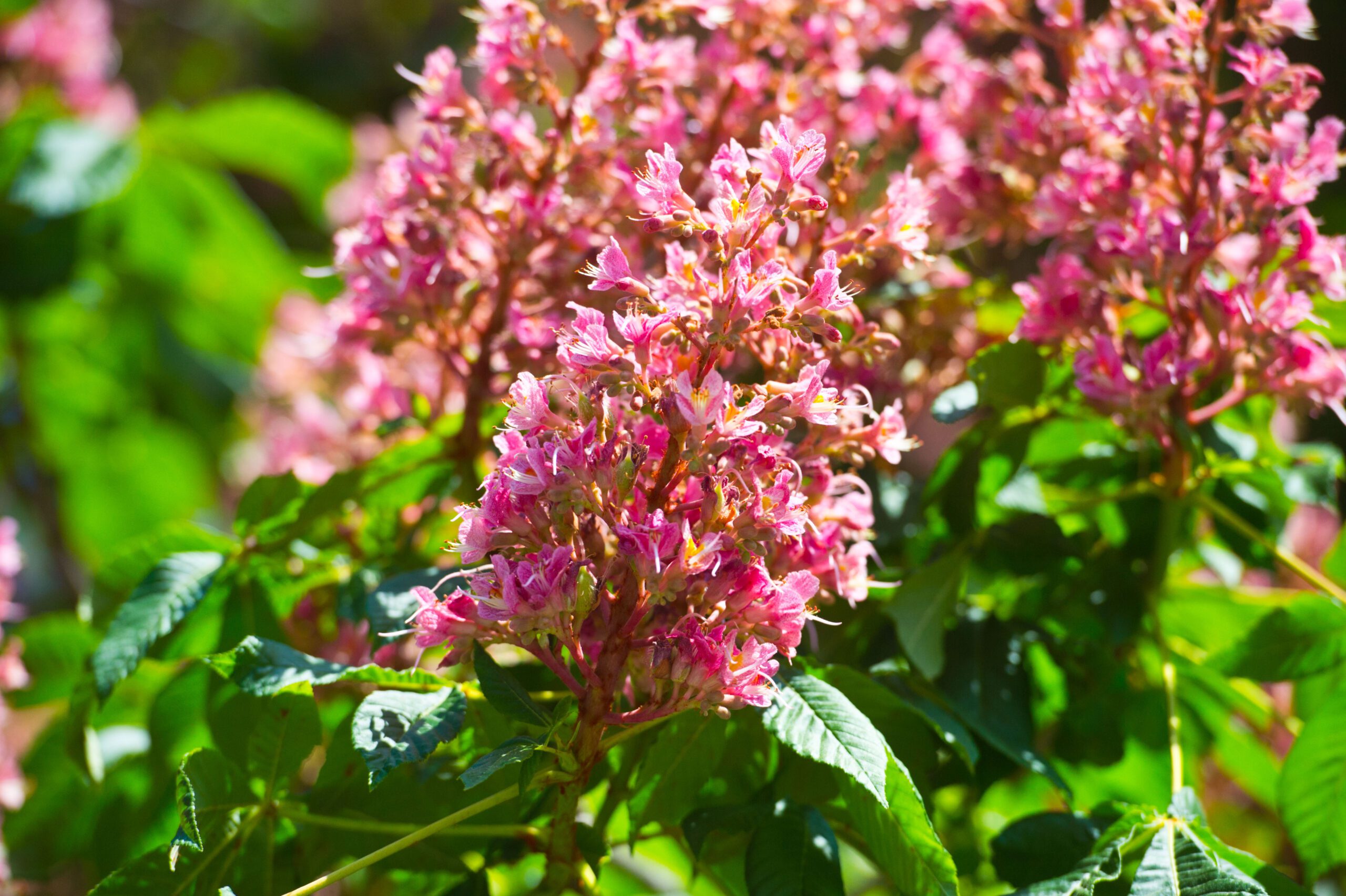Tree Information
Specialities
Tolerances
Wet Soil: High
Dry Soil: Medium
Lime: High
Aesculus indica, commonly known as the Indian Horse Chestnut, is a large deciduous tree native to the Himalayan region. It’s closely related to other species of the Aesculus genus, including the well-known Aesculus hippocastanum. The Indian Horse Chestnut will do well in parks, avenues and woodlands and will thrive if grown on chalk.
Its leaves consist of five to seven leaflets arranged in a fan like manner. Each leaflet is elliptical in shape with serrated margins. They bloom a bronze tinged colour, and eventually turn a glossy dark green. One of the most striking features of Aesculus indica is its showy flowers which appear in late spring to early summer. These are upright conical panicles and consisting of individual blooms. Each flower is creamy white and pale pink with flecks of yellow. Flowers are fragrant and are a treasure for bees and other pollinators.
Following the flowering period, Aesculus indica will produce chestnuts or conkers, in the form of spiny green capsules. In autumn, these turn brown and split open revealing dark brown seeds, also known as horse chestnuts or conkers. In traditional medicine, various parts of the Aesculus indica have been used for their medicinal properties. However, it is important to note that the conkers are toxic and should not be consumed by humans.
Overall, Aesculus indica is a captivating tree with its elegant form, beautiful flowers and intriguing fruit. It adds aesthetic value to landscapes while also holding cultural and medicinal significance.
Visit our Useful Resources for in-depth guides
Discover guides to help you with specifying your trees, caring for your trees and understanding the weights and dimensions of trees.
Useful ResourcesSize
Large
10m high x 5m wide after 25 years
Environment
Often cultivated as an ornamental tree in parks, large gardens and along avenues.
Canopy
Broad, rounded crown with a shaggy, bushy canopy. Trunk is sturdy and covered in rough greyish-brown bark.
Foliage
Leaves have five to seven leaflets arranged in a fan shape. Young leaves are bronze tinged then turn green in summer. Beautiful shades of orange and red in autumn.
Flowers
Clusters of white flowers in spring.
Fruit
Smooth fruit shells in autumn. Shells contain a small, brown, shiny seed.
Resilience
Hardy and adaptable tree, capable of thriving in a range of soil types including chalk. Prefers most, well-drained soil and will do well in both full sun and partial shade.
Make an Enquiry
Enquire below and speak to one of our expert team. For trades only, for general public enquiries click here.
Find Trees For Your Project
View Our TreesSpeak to a Member of Our Sales Team
Make an Enquiry
